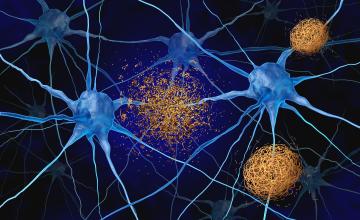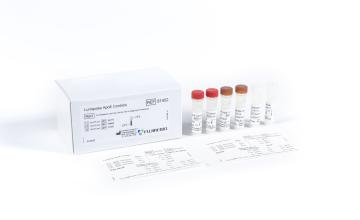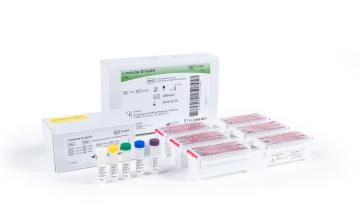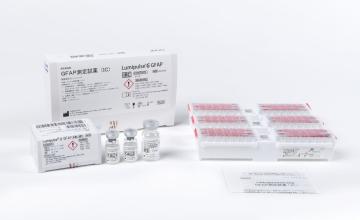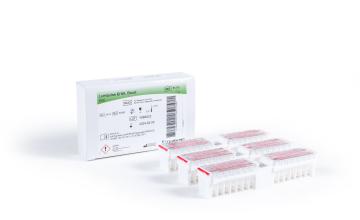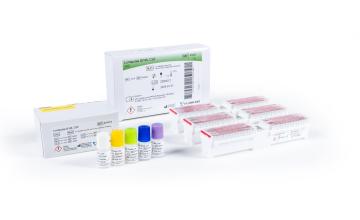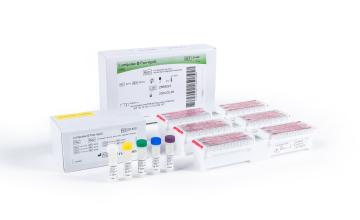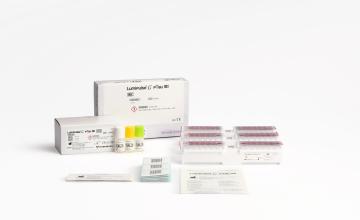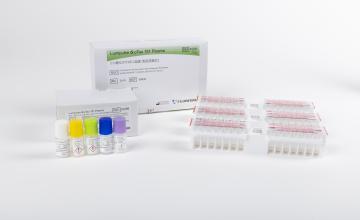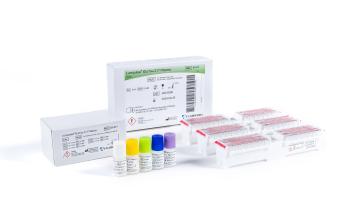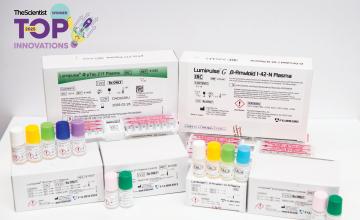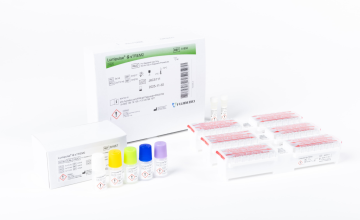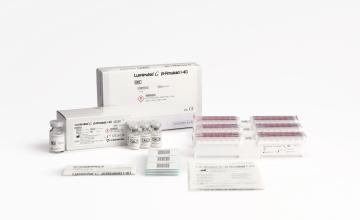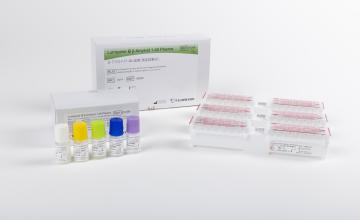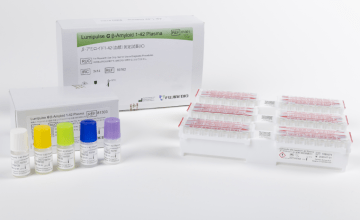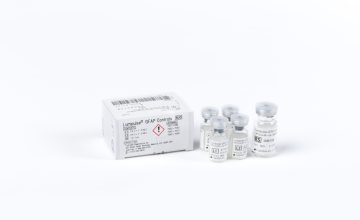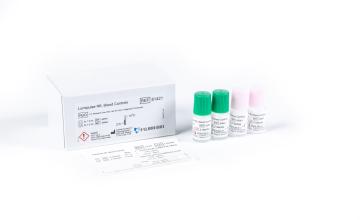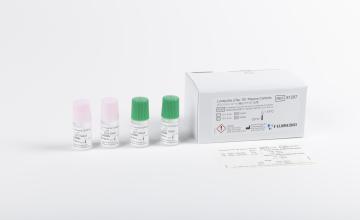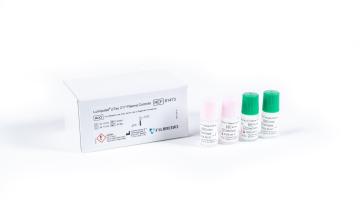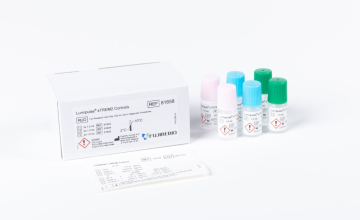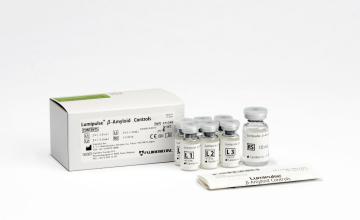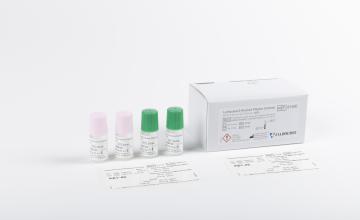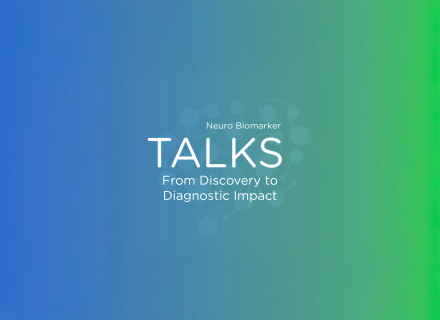On November 3, 1906, the German clinical psychiatrist and neuroanatomist Alois Alzheimer reported “A...
Association between the CSF Aβ1- 42/Aβ1-40 ratio and amyloid PET
Sep 9, 2020
Most studies have found a strong association between CSF Aβ1-42 and amyloid PET measurements. However, in these studies, 10–20% of healthy individuals and MCI patients show a mismatch in CSF Aβ1-42 alone and amyloid PET status6. A study published by Janelidze et al. in 2016 demonstrated that the CSF Aβ1-42/Aβ1-40 (and Aβ1-42/Aβ1-38) ratio better predicts abnormal cortical amyloid deposition (visualized with PET) compared to Aβ1-42 alone. The ratios increased the classification performance both for people who were falsely classified as positive (by low CSF Aβ1-42) and for people who were falsely classified as negative (by high CSF Aβ1-42).7
Janelidze et al. show that in patients with mild cognitive complaints, low CSF Aβ1-42, Aβ1-40, and Aβ38 are linked to subcortical injury. They hypothesize that underlying mechanisms are likely related to dysregulation in amyloid precursor protein (APP) pathways with a general decline in the
production of Aβ. However, in accordance with earlier investigations, they found that low CSF levels of Aβ1-42, but not Aβ1-40 and Aβ38, were associated with more AD-specific neurodegeneration (i.e., hippocampal atrophy). They partially attribute the 23–36% increase in accuracy of the Aβ1-42/Aβ1-40 ratio compared to Aβ42 alone when differentiating AD from Parkinson’s Disease/DLB and Vascular Dementia (or from non‐AD dementias as a whole group) to this phenomenon.7
Furthermore, significantly higher concordance with 18F- flutemetamol PET was observed when using the Aβ1-42/Aβ1-40 ratio compared to Aβ1-42 alone in a study by Pannee et al. These results showed that the CSF Aβ1-42/Aβ1-40 and Aβ1-42/Aβ1-38 ratios are strongly associated with cortical Aβ fibrils measured by 18F- flutemetamol PET.8
Interestingly, the Aβ1-42/Aβ1- 40 ratio may reflect altered Aβ kinetics potentially detecting changes in amyloid deposition before these changes are detectable by PET. These altered kinetics may account for the minor discordances observed between PET and CSF results most frequent in MCI and healthy individuals.9
Altogether, these results suggest that an isolated drop in CSF Aβ1-42 may be more specific for AD-type pathology, whereas lower CSF levels of all three Aβ isoforms might be associated with subcortical damage in general. This assumption fits findings that reduced levels of all three Aβ species can be found in Parkinson Dementia, Dementia with Lewey bodies and Vascular Dementia, several disorders that are accompanied by subcortical changes.7
7. Janelidze S, Zetterberg H, Mattsson N, et al. CSF Abeta42/Abeta40 and Abeta42/Abeta38 ratios: better diagnostic markers of Alzheimer disease. Ann Clin Transl Neurol. 2016;3(3):154-165. doi:10.1002/acn3.274
8. Pannee J, Portelius E, Minthon L, et al. Reference measurement procedure for CSF Aβ 1-42 and the CSF Aβ 1-42 /Aβ 1-40 ratio - a cross-validation study against Amyloid PET. J Neurochem. 2016. doi:10.1111/jnc.13838
9. Patterson BW, Elbert DL, Mawuenyega KG, et al. Age and amyloid effects on human central nervous system amyloid-beta kinetics. Ann Neurol. 2015;78(3):439-453. doi:10.1002/ana.24454
FDI-589 06/20
Related articles
Nov 19, 2025
When To Use Blood-Based Biomarkers For Alzheimer's Disease Assessment
Accelerating Alzheimer’s diagnosis with blood-based biomarker testing
Studies indicate that patients may wait an average of more than three years for...
Sep 25, 2025
How Can You Diagnose Alzheimer's at the Earliest Stages?
Diagnosing Alzheimer’s at the earliest stages
An early Alzheimer’s diagnosis has never been more important — or more attainable — than it is today...
Aug 27, 2025
The Future of Alzheimer's Disease Diagnosis
What is the future of Alzheimer's disease diagnosis?
Two anti-amyloid drugs are now available to patients with mild cognitive impairment (MCI) or mild...
Jun 25, 2025
Everything You Need to Know About Amyloid Presence and Alzheimer’s Disease-modifying Therapies
Confirming amyloid pathology before administering Alzheimer’s disease-modifying therapies.
Approximately seven million Americans are currently living...
May 20, 2025
Video - The Scientist Symposium: Understanding Disease Through Biomarkers
The Evolution of AD Diagnosis: The Role of Biomarkers
Biomarkers are transforming the landscape of disease detection and diagnosis—especially in the...
May 8, 2025
Modern Alzheimer’s Diagnosis: What Clinicians Need to Know About Biomarkers and Staging
What PET scans, CSF assays, and blood tests reveal about Alzheimer’s — and how the A/T/N framework supports earlier, more accurate diagnoses.
Alzheimer...
Nov 13, 2024
Video - The Balancing Act: Alzheimer's Awareness Redefined
Better Weapons to Fight Alzheimer’s Disease
Mar 7, 2023
Video - A Neurochemist's Search to Save Memories - Christa's and Charlotte's Story About Alzheimer's Disease
Meet Dr. Charlotte Teunissen, Professor in Neurochemistry, and her lifelong friend Christa Reinhoudt, who was diagnosed with Alzheimer's disease in...
Nov 29, 2022
Scientific Poster - In an Optimized CSF Collection Protocol the pTau181/Aβ1-42 Ratio Increases Preanalytical Variability Over Measuring Aβ1-42 Alone
Background
Core cerebrospinal fluid (CSF) biomarker concentrations for β-amyloid1-42 (Aβ1-
42), β-amyloid1-40 (Aβ1-40), and pTau181 are valuable in...
Oct 14, 2022
Scientific Poster - A fully Automated Method That Combines CSF Concentrations of Lumipulse G β-Amyloid 1-42 and 1-40 Into a Numerical Ratio
Study Objective
The aim of this study was to analytically verify the Lumipulse G
β-Amyloid Ratio (1-42/1-40) assay and evaluate performance of
the...
Oct 14, 2022
Scientific Poster - Pre-analytics of the Aβ1-42/Aβ1-40 Ratio in Fresh and Frozen Samples Using an Optimized CSF Collection Protocol
Background
Cerebrospinal fluid (CSF) biomarkers β-amyloid1-42 (Aβ1-42) and β-amyloid1-40 (Aβ1-40)
have shown high concordance with amyloid PET when...
Oct 14, 2022
Scientific Poster - Reducing Misdiagnosis of Alzheimer’s Disease Pathology Utilizing CSF and Amyloid PET
Background
Utilizing cognitive tests alone, including the Mini-Mental State Examination (MMSE) or the Montreal Cognitive Assessment (MoCA), cannot...
Oct 14, 2022
Scientific Poster - Prediction of Amyloid PET Status Using the Lumipulse G β Amyloid Ratio (1-42/1-40)
Background
Cerebrospinal fluid ( amyloid biomarker concentrations are valuable
in the assessment of patients for Alzheimer’s dementia ( Automated...
Oct 14, 2022
Scientific Poster - Clinical Validation of the Lumipulse® G β-Amyloid Ratio (1-42/1-40) in a Subset of ADNI CSF Samples
Background
The CSF Lumipulse G β-Amyloid Ratio (1-42/1-40)1 provides a potential
alternative to amyloid PET testing for patients with cognitive...
Sep 9, 2022
The evolution of Alzheimer's disease diagnosis
By Rianne Esquivel, PhD and Francesca I. De Simone, PhD
Alzheimer’s disease (AD) is the most common cause of dementia in the elderly and is...
Jan 20, 2021
Comparison of Aβ1-42/Aβ1-40 ratio with other ratios
CSF Aβ1-42/Aβ1-40 is a tool thought to normalize atypical amyloid levels, whereas other ratios might be seen more as interpretation tools that allow...
Nov 16, 2020
The role of Aβ1- 40 in the Aβ1-42/Aβ1- 40 ratio
Aβ1-40 is the most abundant amyloid peptide in CSF, while Aβ1-42 accounts for only about 10% of the total Aβ peptide population.15 Total Aβ...
Oct 13, 2020
Aβ1-42/Aβ1-40 ratio to decrease preanalytical variability
- Aβ1-42 adsorption to plastic is a relevant preanalytical factor in laboratory practice.
- Adsorption to plastic seems to affect different Aβ isoforms...
Jul 29, 2020
Understanding the Aβ1-42/Aβ1-40 ratio in relation to Alzheimer’s Disease
CSF Aβ1-42/Aβ1-40 ratio as a potential tool to detect amyloid deposition





